November 29, 2016
We departed Klamath Falls and the wonderful hospitality of Jack’s sister and headed into California. Although snow was threatening, the roads were mostly dry, which is good since we don’t have studded snow tires, four-wheel drive, or even all-wheel drive for that matter.
We hated to leave Klamath Falls and Jack’s sister Mary who takes such good care of us. Of course I did gain a couple of pounds during the stay and would have done that even without Thanksgiving thrown into the mix. Mary always makes sure we are well fed.
Our first day back on the road was mostly spent driving. We had planned to stay at Woodson Bridge State Recreation Area near Corning California (Olive capital of the world, I think), but the park was closed. We stayed here during our 2013-2014 Sorta Big Year and liked it so was looking forward to staying here again. I chose this location (there aren’t too many campgrounds in the vicinity) because of its proximity to several National Wildlife Refuges, including one of our favorite (yes we have so many its true) – Sacramento National Wildlife Refuge.
We found an open campground at Colusa – the Colusa Sacramento River State Recreation Area. This SRA campground is within the city limits of Colusa and is operated by the city on behalf of the state. I almost think the campground was an afterthought. Feels more like a day-use area, which in part it is. There is a levee we walked and we were delighted by the number of birds we saw, including many Turkey Vultures coming in to roost for the night. The highlight was a Nuttall’s Woodpecker and Red-shouldered Hawk. This campground is located near the Colusa National Wildlife Refuge, which we plan to visit the next day.
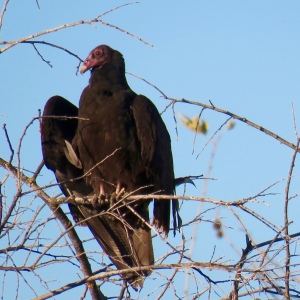
Don’t cry for me Turkey Vulture. I never thought I’d see you. All through my bird days. My mad obsession. You kept your distance I kept on searching. (Sung to Evita)
November 30, 2016
Before heading to the Colusa National Wildlife Refuge we stopped at bakery that had gotten good reviews – Sweet Bean Bakery. We were disappointed in the limited pastry selection. We bought a couple of blueberry scones (almost as good as mine) and headed to the refuge – one of three refuges we would visit today.
Colusa National Wildlife Refuge
This 5,077 acre refuge was established in 1945. The refuge offers a 3-mile auto tour route and a 0.5 mile hiking trail. We took the auto tour route first and were we dazzled by the array of waterfowl present – thousands of Northern Pintails, Northern Shovelers, Greater White-fronted Geese, and Snow Geese, as well as American Coots. In far less numbers were Cinnamon Teal, Mallards, American Wigeon, Bufflehead, Ross’ Geese, and one Eurasian Wigeon.
We did stop along the route to watch several Western Meadowlarks feeding alongside the road. One young meadowlark had something wrong with the side of its face. Looked like a sore and the eye was missing.
The highlight of the day however was the American Bittern lurking in the reeds right along side the road. If I hadn’t been looking for Rails I would have missed it. What a beautiful bird. And we were lucky the bird didn’t flush too far when Jack backed up so we could be a better view, and me better photographs.
Oh and I almost forgot – there was a lone Long-billed Curlew. This bird is also a favorite and a highlight for the day.
Along the route we were treated to over 120 Black-crowned Night Herons roosting in the trees along a stream. Fun to watch a raptor flush the birds. When the night-herons came back to the trees they were often chased off by other night-herons. The juveniles never seem to catch a break.
Giving Doodlebug a break, I did walk a Nature trail for a short distance. Jack stayed back as he seemed to have gotten the chills. It was windy and cold out in the morning.

When I saw this tree limb sticking out of this nest box I thought what the hey. I guess they use the limb to entice birds to use the nest since the nest box’s entrance hole is covered.
Bird Species Seen or Heard at Colusa National Wildlife Refuge
- Turkey Vulture
- Mallard
- Loggerhead Shrike
- Snow Goose
- Ross’ Goose
- Northern Pintail
- Northern Shoveler
- Greater White-fronted Goose
- Great Egret
- Great Blue Heron
- Gadwall
- American Wigeon
- Eurasian Wigeon
- American Coot
- Golden-crowned Sparrow
- Orange-crowned Warbler
- Yellow-rumped Warbler
- Red-winged Blackbird
- White-crowned Sparrow
- Long-billed Curlew
- Killdeer
- Savanah Sparrow
- Red-tailed Hawk
- Black-crowned Night-heron
- Double-crested Cormorant
- Marsh Wren
- Cinnamon Teal
- Song Sparrow
- Bufflehead
- Black Phoebe
- Red-shouldered Hawk
- Green-winged Teal
- White-faced Ibis
- Wood Duck
- Northern Harrier
- Ring-necked Pheasant
- Ruby-crowned Kinglet
- Snowy Egret
- House Finch
- American Pipit
- Belted Kingfisher
- Tree Swallow
- Western Meadowlark
- Common Gallinue
- American Bittern
- California Towhee
- Northern Mockingbird
Develan National Wildlife Refuge
This 5,877 acre refuge, which was established in 1962, is, alas, closed to birders. There was a sign encouraging us birders to use the auto tour routes at Colusa and Sacramento National Wildlife Refuges. Hunters, on the other hand are welcomed to Develan. There were plenty of Snow and Ross’ geese for hunters to chose from. Although we didn’t hear a lot of shots, the geese would flush and fly around in waves after waves of birds. So beautiful when there are large flocks in flight.
We did drive along the border of the refuge but couldn’t see too much as the vegetation – mostly weeds – was too high. From here we drove to the Sacramento National Wildlife Refuge for some truly fine birding.

This goose was alongside the road. It has been shot, but not killed. Not all shotgun blasts kill the birds outright. Poor thing. I hate to see animals suffer.
On our way to the Sacramento National Wildlife Refuge we observed a lot of waterfowl and water birds in water covered rice fields. Lots of great birding around the region.
Bird Species Seen or Heard at Devevan NWR
- Snow Goose
- Northern Shoveler
- Turkey Vulture
- Northern Pintail
- American Coot
- Black Phoebe
- Snowy Egret
- Red-winged Blackbird
- Red-tailed Hawk
- Greater White-fronted Goose
- House Finch
- Northern Harrier
- Bald Eagle
- Loggerhead Shrike
- Common Raven
- Great Blue Heron
- Great Egret
Sacramento National Wildlife Refuge
This 10,819 acre refuge, which was established in 1937. In the winter the refuge is home to 500,000-750,000 ducks, and 250,000 geese. WOW !!!! That is a lot of birds.
The refuge has a 6-mile auto tour route. We’ve been to this refuge several times in the past and always enjoy the waterfowl and other wildlife. We weren’t disappointed today.
There were Snow (and Ross’ ) Geese everywhere ….
We generally see at least one male Ring-necked Pheasant, but today saw 3 (along with 2 females). Although these birds are non-native to the U.S., you have to admit they are beautiful birds.
In the past we’ve seen a fair number of shorebirds at this refuge, however, with the water being so high most of the shorebird habitat was covered. Not that we are complaining because California has been experiencing severe droughts and the birds need the water. We did see about 20 Black-necked Stilts and 3 Killdeer so I won’t complain. Love the stilts – such elegant birds on long red legs.
When we do the auto route it usually takes us three plus hours to travel the refuge roads. Today was no exception. Lots of great birds and a few mammals observed too.

Turtle on the log. I actually took the photo because I liked how the log looked in the water. Only after taking the photo did Jack bring the turtle to my attention.

Red-tailed Hawk. I was told one way to tell the Red-tailed Hawk from other hawks is the dark head – white chest- dark breast (dark, light, dark).
Bird Species Seen or Heard at Sacramento National Wildlife Refuge
- Red-tailed Hawk
- Great Egret
- Black Phoebe
- Belted Kingfisher
- American Coot
- Turkey Vulture
- Lincoln’s Sparrow
- Common Raven
- California Towhee
- Western Meadowlark
- European Starling
- White-crowned Sparrow
- Snow Goose
- Ross’ Goose
- Yellow-rumped Warbler
- Mallard
- Northern Pintail
- Gadwall
- American Pipit
- Northern Shoveler
- Northern Harrier
- Green-winged Teal
- Greater White-fronted Goose
- Canada Goose (these guys aren’t very common here)
- Ring-necked Pheasant
- Cinnamon Teal
- American Goldfinch
- Savannah Sparrow
- Song Sparrow
- Herring Gull
- American Wigeon
- Golden-crowned Sparrow
- Snowy Egret
- Peregrine Falcon
- Black-necked Stilt
- Ring-necked Duck
- Northern Flicker
- Bushtit
- Nuttall’s Woodpecker
- Marsh Wren
- Killdeer
- White-faced Ibis
- Bufflehead
- Merlin
The highlight at this refuge were the Bushtits (one of my favorite birds – they are sooooooooo cute) and of course the amazing sight of thousands and thousands of snow geese. Truly a spectacle.
All the refuges sported Turkey Vultures, Red-tailed Hawks, and Northern Harriers. We did see a Red-shouldered Hawk at Colusa, a Bald Eagle and American Kestrel at Delevan, and a Merlin and Peregrine Falcon at Sacramento.
Luckily there is a lot of water at all three refuges. These refuges are so important as they support a lions share of the Pacific Flyway population of waterfowl. We saw a lot of waterfowl at Lower Klamath NWR, but there are a lot at these three refuges too.
Traveling from one refuge to another we also came across two Greater Yellowlegs in a rice field, Mourning Doves on power pole and fence lines, and hundreds of Brewer’s Blackbirds.
Tonight we are staying at the Buckhorn Campground at Black Butte Lake Recreation Area (an Army Corp of Engineer recreation operated area). I think we are the only campers here tonight – but you can’t go wrong for $10 a night with the old geezer pass. This area is located in a beautiful setting – rolling hills dotted with shapely oak trees – about ten miles west of Orland, California.
December 1, 2016
Our intention was to bird the Sacramento National Wildlife Refuge again in the morning and then head south for the night. But we didn’t make it to the refuge until the afternoon. Boy what a difference a day makes. Seems like we saw more ducks (definitely a few new duck species – well some we didn’t see yesterday), and in areas where we saw hundreds of Snow Geese – nothing. We did see Snow Geese later on during the auto tour route. For new species – to add to the list of species already seen at the refuge over the last two days – we added another six to the list: Ruddy Duck, Blue-winged Teal, Canvasback, Long-billed Dowitcher, American Bittern (saw one at Colusa, but not Sacramento yesterday), and Cooper’s Hawk.

Along the auto route there are three ‘park and stretch’ spots, including this one with an observation platform.

One of my top five favorite birds in the U.S. is a Bushtit. I felt so fortunate to have captured one on film. I recently learned the male Bushtits have black eyes. Not so for the female Bushtits whose eyes are a pale yellow or white (after fledging).
The Sacramento Valley is important habitat for waterfowl. We saw thousands and thousands and thousands and thousands (you get my drift) of them in our short couple of day stay in the valley.
Birds Seen or Heard at the Sacramento National Wildlife Refuge (today)
- Red-winged Blackbird
- Turkey Vulture
- Yellow-rumped Warbler
- Bushtit
- California Towhee
- Golden-crowned Sparrow
- American Coot
- Great Egret
- Loggerhead Shrike
- Northern Harrier
- American Pipit
- Greater White-fronted Goose
- Red-tailed Hawk
- Northern Pintail
- Northern Shoveler
- Gadwall
- Cinnamon Teal
- Red-necked Pheasant
- Snow Goose
- Herring Gull
- American Wigeon
- Green-winged Teal
- Western Meadowlark
- Ruddy Duck
- Black Phoebe
- American Bittern
- Marsh Wren
- Mallard
- Bufflehead
- Canvasback
- Great Blue Heron
- Black-necked Stilt
- Killdeer
- Common Raven
- Long-billed Dowitcher
- Blue-winged Teal
- Nuttall’s Woodpecker
- Northern Flicker
- Ring-necked Duck
- Canada Goose
- House Finch
- Brewer’s Blackbird
- Belted Kingfisher
- White-faced Ibis
- Snowy Egret
- European Starling
- Copper’s Hawk
- Ruby-crowned Kinglet
Oh least I forget to mention, shortly after leaving our campground we did spot three Yellow-billed Magpie. These magpies are endemic to California. We’ve seen them before, but it is always a treat to see them again. I just love their yellow bills – very striking.
We decided to camp at the other campground (Orland Butte) for the night, but found it closed, so back to Buckhorn campground for another lonely night – still no other campers (Nice).
Remember – It’s Always a Great Day to Bird
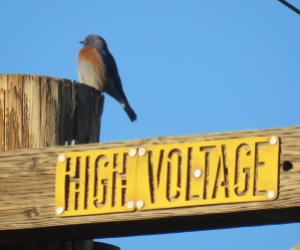

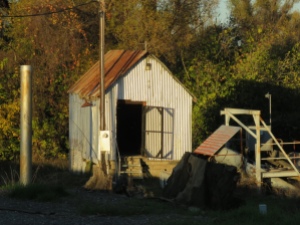

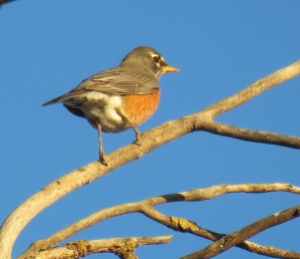

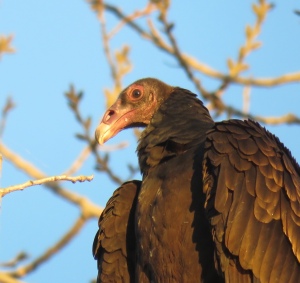





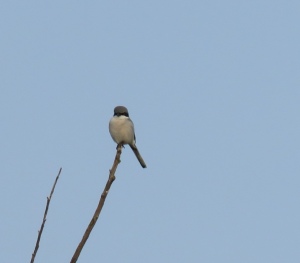
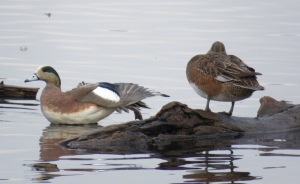
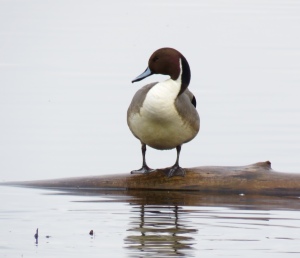


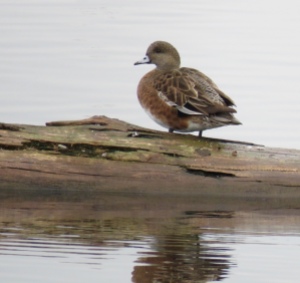



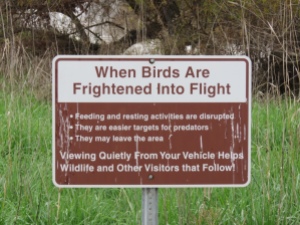
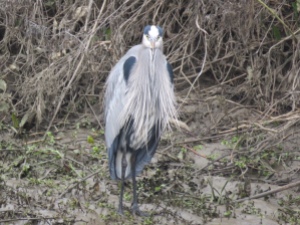
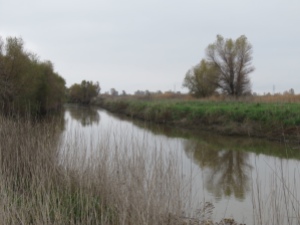




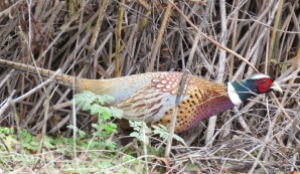























































































Leave a Reply